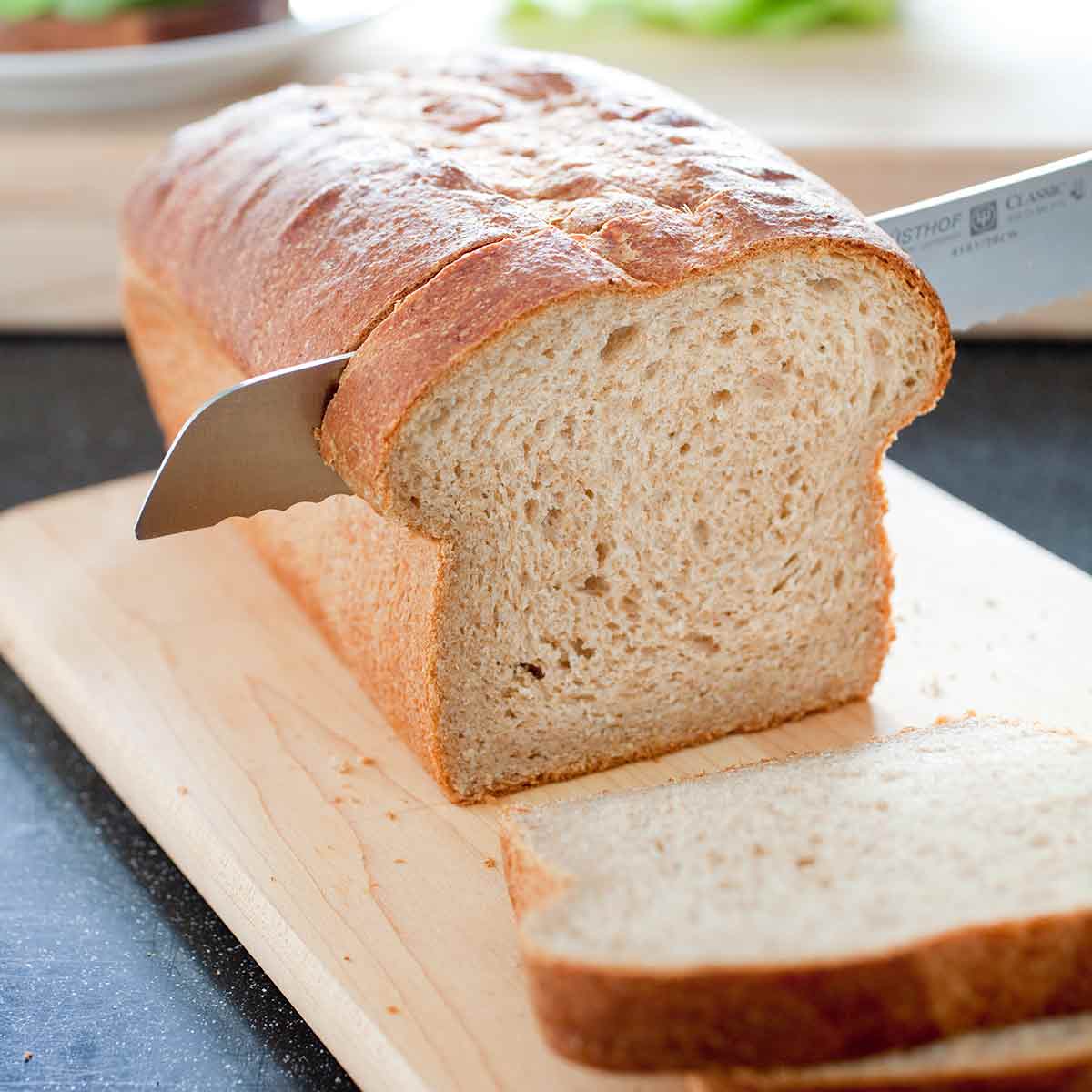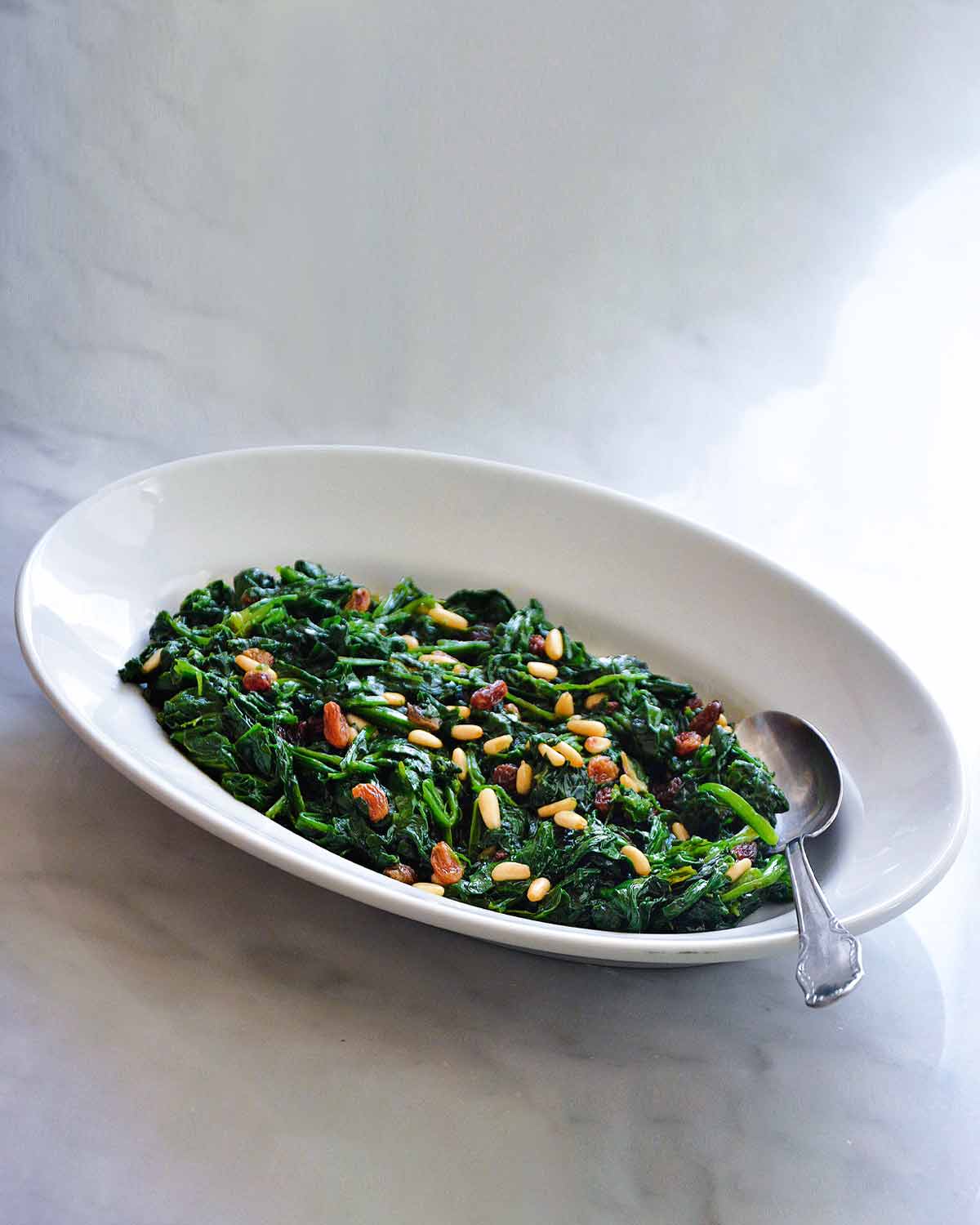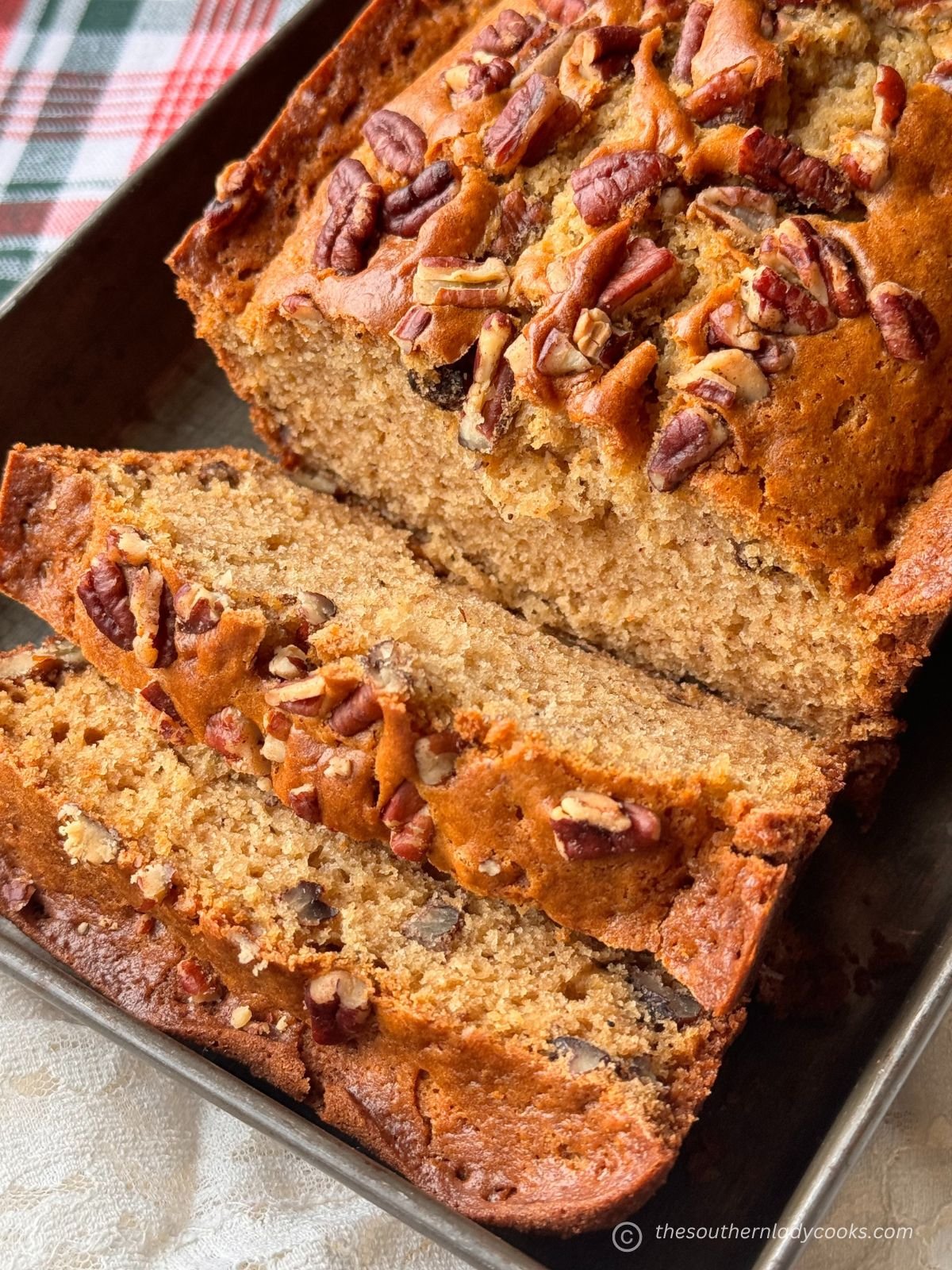Whole-Wheat Sandwich Bread
By Leite's CulinariaIngredients
2 1/4 cups bread flour (plus more for the work surface)
1 cup water (heated to 110°F (43°C))
1/2 teaspoon instant or rapid-rise yeast
3 1/2 cups whole-wheat flour (plus more for the work surface and as needed*)
1/2 cup wheat germ*
2 cups whole milk
6 tablespoons (3 oz) unsalted butter (room temperature, plus more for the loaf pans, if desired)
1/4 cup honey
2 tablespoons instant or rapid-rise yeast
2 tablespoons mild vegetable oil (plus more for the bowl)
4 teaspoons table salt
Nonstick cooking spray
2 cups water
- Prep Time60mins
- Cook Time50mins
- Servings24
Instructions
Make the sponge
In a large bowl, combine the flour, water, and yeast and stir with a wooden spoon until a uniform mass forms and no dry flour remains, about 1 minute. Cover the bowl tightly with plastic wrap and let sit at room temperature for at least 8 hours or up to 24 hours.
Make the soaker
In a separate large bowl, combine the flour, wheat germ, and milk and stir with a wooden spoon until a rough mass forms, about 1 minute. If the mixture is too soft and wet, add a little more flour, one tablespoon at a time, to achieve a shaggy consistency. TESTER TIP: The soaker will be a little looser in shape than the sponge but you still want to be able to knead it in the next step.
Move the soaker to a lightly floured work surface and knead by hand until smooth, 2 to 3 minutes. Once again, add more flour, one tablespoon at a time, if needed, to achieve a smooth consistency.
Return the soaker to the bowl, cover tightly with plastic wrap, and refrigerate for at least 8 hours or up to 24 hours.
Make the dough
In the bowl of a stand mixer fitted with the dough hook, combine the sponge, butter, honey, yeast, oil, and salt.
Tear the soaker into 1-inch (25 mm) pieces and add to the bowl. Mix at low speed until a cohesive mass starts to form, about 2 minutes. Increase the speed to medium and knead until the dough is smooth and elastic, 8 to 10 minutes.
Dump the dough onto a lightly floured work surface and knead by hand to form a smooth, round ball, about 1 minute.
Place the dough in a large, lightly oiled bowl. Spray a piece of plastic wrap with cooking spray and cover the bowl tightly with it, oiled side down. Let the dough rise at room temperature for 45 minutes. The dough may not rise significantly during this period.
Gently press down on the center of the dough to deflate. Spray a rubber spatula or bowl scraper with nonstick cooking spray. Fold the partially risen dough over itself by gently lifting and folding the edge of the dough toward the middle. Turn the bowl 90 degrees and fold again. Turn the bowl and fold the dough 6 more times (for a total of 8 folds). Cover tightly with plastic wrap and allow to rise at room temperature until doubled in size, 30 to 45 minutes. TESTER TIP: The ambient temperature of your kitchen will determine rising time, so start checking for doubling after 30 minutes, especially if your room temperature is relatively warm. Ditto for the next rise as well!
Butter two 9 by 5-inch (22 by 11-cm) loaf pans or spray them with nonstick cooking spray.
Slide the dough onto a well-floured work surface and divide in half. Gently press 1 piece of the dough into a 17 by 8-inch (43 by 20-cm) rectangle, with the short side facing you. Roll the dough toward you into a firm cylinder, keeping the roll taut by tucking it under itself as you go. Turn the loaf seam side up and pinch it closed. Place the loaf, seam side down, in a prepared pan, pressing gently into the corners. Repeat with the second piece of dough.
Cover the loaves loosely with cooking spray-coated plastic wrap and let rise at room temperature until nearly doubled in size, with the top of the loaves risen about 1 inch 25 mm above the lip of the pan, 30 minutes to 1 hour. Start checking the rise early to prevent overflow!
At least 30 minutes before baking, adjust the oven racks to the middle and lowest positions. Place a baking stone or large metal baking sheet turned upside down on the middle rack and an empty loaf pan or other heatproof pan on the bottom rack, and heat the oven to 400°F (204°C).
When the dough has risen, in a small saucepan, bring 2 cups water to boil on the stovetop.
Using a sharp serrated knife or a single-edge razor blade, make one 1/4-inch-deep (6-mm) slash lengthwise down the center of each loaf.
Working quickly, pour the boiling water into the empty loaf pan in the oven and set the loaves on the baking stone. Immediately reduce the oven temperature to 350°F (177°C). Bake until the crust is dark brown and the loaves register 200°F (93°C) on an instant-read thermometer, 40 to 50 minutes, rotating the loaves front to back and side to side halfway through baking.
Move the pans to a wire rack and let cool for 5 minutes. Remove the loaves from the pans, return to the rack, and let cool to room temperature, about 2 hours, before slicing and serving.
SidesOther popular recipes
Popular categories
- Burgers & Wraps
- Dips & Toppings
- Stews & Chilis
- Air Fryer
- Appetizer
- Appetizers
- Appetizers & Snacks
- Appetizers/Snacks
- Beef
- Beverage
- Beverages
- Biscuit
- Bread
- Breakfast
- Breakfast & Brunch
- Breakfast And Brunch
- Brunch
- Cake
- Candy
- Casserole
- Chicken
- Chocolates
- Cobbler
- Cocktail
- Cocktails
- Condiment
- Condiments
- Cookies
- Cookies & Bars
- Cooking Basics
- Dessert
- Desserts & Sweet Treats
- Dinner
- Dip
- Dips
- Dips & Spreads
- Dressing
- Dressings
- Drink
- Drinks
- Drinks & Adult Beverages
- Easy
- Entree
- Fish
- Fish Recipe
- Gravy
- Ham
- Holiday
- Homemade Ingredients & Condiments
- Hors D'Oeuvres
- Ingredient
- Lunch
- Main
- Main Course
- Main Dish
- Mains
- Mains & Entrees
- Marinade
- Meal Prep
- Muffins
- Pancakes & Waffles
- Pantry
- Party Food
- Pasta
- Pie
- Pizza
- Pork
- Pork Recipes
- Pressure Cooker Or Instant Pot
- Quick Breads
- Salad
- Salad Dressings & Toppings
- Salads
- Salsa
- Sandwich
- Sandwiches
- Sauce
- Sauces
- Sauces & Marinades
- Seafood
- Seasoning
- Seasonings
- Sheet Pan Dinners
- Side
- Side Dish
- Side Dishes
- Sides
- Sides & Vegetables
- Slow Cooker
- Snack
- Snacks
- Soup
- Soup Recipe
- Soups
- Soups And Stews
- Spice Mix
- Spreads
- Thanksgiving
- Turkey
- Vegetable










